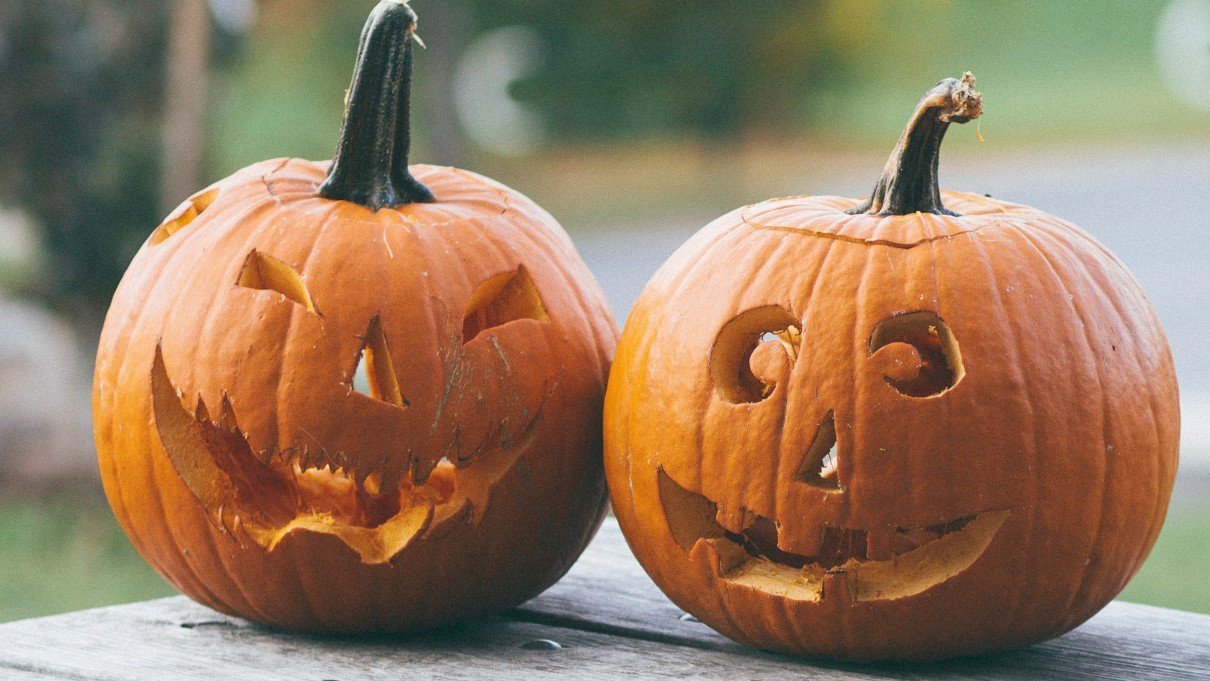What Do I Do With My Pumpkins After Halloween?

In the UK alone, up to four million pumpkins are carved each Halloween, contributing to 18,000 tons of landfill waste – equivalent to around 360 million portions of pumpkin pie.
In the United States, 1.91 billion pounds of pumpkins were grown just in 2014.
All that waste just for one day! But it doesn’t have to go to the landfill.
Instead, consider other uses for your pumpkin after Halloween: as compost or food.
Even Halloween pumpkins can be edible, and not just for people – you can feed them to your pets in small quantities or leave them out for local wildlife. You don’t even need a compost heap to let it degrade and help plants nearby.
What is the best way to dispose of pumpkins?
When composting, you need the right ratio of carbon sources to nitrogen sources. It’s likely that you typically have more carbon sources like paper, especially around Halloween with party invitations, advertisements for Christmas, and more, so pumpkins can help keep your ratio balanced.
The flesh of a pumpkin will compost quickly with the right amounts of carbon sources, water, and oxygen, though the rind (outside of the pumpkin) will take longer.
Cutting the pumpkin into pieces will help it compost faster.
You can even leave out the pumpkin flesh for birds to peck at before composting, so you have less to compost and the local wildlife can get a nutritious snack.
If you’re planning to compost the very next day after Halloween, consider looking up some pumpkin recipes instead. Or if you have pets, cut them a snack before you toss everything on the heap.
Eco-friendly ways to dispose of your pumpkins after Halloween
Of all the ways to dispose of pumpkins, these are the most eco-friendly ways:
- Let wildlife or animals eat it
- Add it to your compost
- Bury it in soil for natural composting
- Make it into a temporary planter
- Eat it – if it hasn’t started decaying yet!
There are many pumpkin recipes out there – you can use everything from the seeds to the skin of a pumpkin to make a delicious meal.
Pumpkin is safe to eat in small quantities for cats, dogs, chickens, horses, cows, pigs, sheep, rabbits, hamsters, and more.
Make sure to check how much pumpkin they can eat and how regularly. And always be sure to remove any candle wax and don’t feed them rotting pumpkins!
Pumpkins that have any signs of mold or are becoming soft are not safe to eat, so make sure to compost them instead.
Is pumpkin a good fertilizer?
You can even consider turning pumpkin into fertilizer.
MIgardener recommends mashing pumpkins together with a sledgehammer or shovel, digging a hole 6-10 inches deep, and pouring the pumpkin mash in before covering it up. You can then plant your flowers or vegetables on top of the hole (a mound of soil is advised) the following spring.
Because pumpkins contain so many nutrients, they’ll feed the soil over time as worms and other critters help decompose them. It can even hold more water to help feed what you plant.
Pumpkin flesh alone has a nitrogen-phosphorus-potassium (NPK) value of 0.16/0.07/0.26, while pumpkin seeds add an additional 0.87/0.5/0.45 NPK.
So if you have a garden, before tossing the pumpkin innards after carving in the garbage, try burying it under your flowerbed or even nearby your plants to give them that extra nutrient boost.
You might even be able to collect some pumpkins from your neighbors if they’re intending to send them to the landfill!
Have an allotment instead? If you don’t have one already, set up a compost heap or a community compost others can contribute to and take from!
Is carving pumpkins bad for the environment?
Halloween generates a lot of waste, from decorations to costumes. Pumpkins contribute a lot of waste to landfills, largely because people don’t know what to do with them.
By composting or eating your carved pumpkins, you can eliminate almost all of the waste that would usually be generated by it.
When carving, make sure to set aside the seeds and carved out pieces and don’t chuck them in the garbage – you could store them in a reusable freezer bag or beeswax wrap if you can’t use them right away.
Even if you do end up throwing out some, you’re reducing as much waste as possible!
